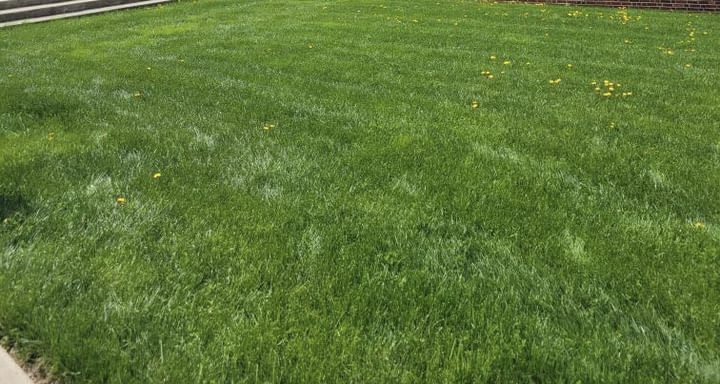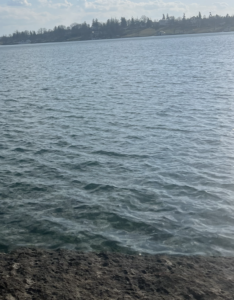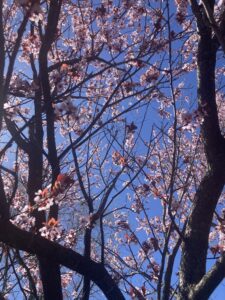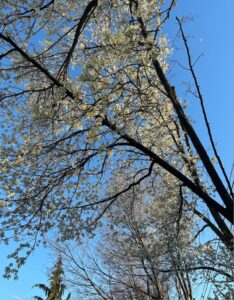The smell of fresh air sinks into my senses as I experience a breath of fresh air that I have not had in months. Sitting inside the same four walls for months upon end led me to appreciate this air more than ever. I sit and let the sun encapsulate my mind and body as I lay in the fresh green grass.
I had intended to read chapters and occupy my mind with academic thoughts, but that idea flew away as I experienced nature. How could one ignore a scene like this and bury their nose in a book? I frequently read and enjoy the act, but I enjoy this scene much more. Each of my senses experiences something new.
I can smell the fresh grass sprouting by the second, I can taste the freshness of the air, I can hear the bugs buzzing with glee, I can touch the prickly grass, and I can see a day that holds endless potential for me to expand into.
The mechanical sound of a lawn mower would normally bring annoyance to my mind, but on this day, it is music to my ears. The bright green grass grows at such a rate that after just a few sunny days it needs to be trimmed. After the machine has done its job, the grass will be left in uniform rows of blades that are all of the same length. This sea of grass will allow for picnics, outdoor games, study sessions, sports practices, and endless other student adventures.
Bright yellow dandelions litter through the grass and many will soon lose to the lawn mower, but they will regrow before my eyes. They will pop up and continue to spread throughout the sea of green. I long for a day when the yellow dandelion has shifted into a wish-making moment, what I will wish for I cannot say.
Maybe I will wish for more days such as these, soaking in the sunshine and tasting the fresh air. Or maybe I will wish for days to pause, there are not enough daylight hours for me to be fully content. Maybe I will wish for the squirrels who flitter through the trees to collect so much food during the summer months that they are fed for winters to come. Maybe I will wish for something else entirely.
These dandelions began to occupy my mind as I sat in the grass. How could some classify something so delicate as a weed? The derogatory name places the wildflower inside of a monstrous box. Undesirable, unsightly, annoyance. Everything I think of when thinking of a weed, but not a dandelion. If the world stands to hate these beings, I stand against the world.
Does something become undesirable when the world decides it is? Or does it exist in that frame before the world even gets a say in the matter? Does the world decide that someone is evil, or were they evil before being exposed to the world.





